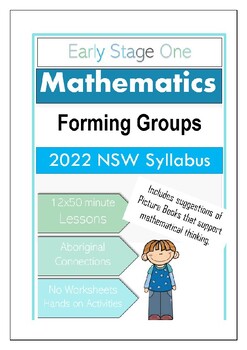ES1 Forming Groups 2022 NSW Syllabus 12 lessons, 5 with Aboriginal Connections
- Word Document File
Description
These 12 lessons focus on Geometric Measure for Early Stage One students, aligned with the 2022 NSW K-2 Syllabus. This series has been designed to assist busy teachers, including casual teachers, in delivering engaging and accessible instruction to their students.
They cover content including:
- creating patterns
- continuing patterns
- exploring patterns in Aboriginal art
- investigating equal groups
- sharing and counting with Aboriginal games
All lessons are hands on, using equipment already in and around the classroom. By delivering hands on learning, your kindgergarten students will be engaged and able to explore the concept through the application of knowledge.
Five of the lessons have an Aboriginal perspective.
Bonus! I have included a list of Australian Literature to support teaching these outcomes.
These lessons are stand alone or can be combined to form a unit. Suitable for classroom teachers, learning support or casual teachers... even those terrified of teaching 5 year olds!





